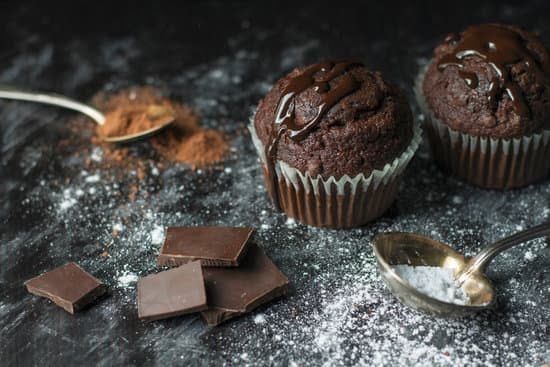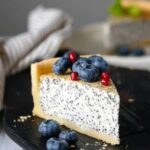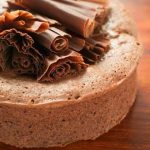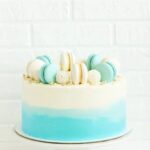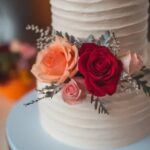Decorator frosting plays a crucial role in turning ordinary cakes into stunning works of art. Whether it’s for a birthday, wedding, or any special occasion, the right choice of frosting can elevate a cake from delicious to visually unforgettable.
This article will delve into the world of decorator frosting, providing a comprehensive guide to different types of frostings, pro tips for cake decorating, essential tools, design ideas and inspirations, flavor combinations, storage tips, and where to find high-quality supplies. So get ready to unleash your creativity and make your cakes truly exceptional with the power of decorator frosting.
In the first section of this article, we will explore the various types of decorator frosting that exist in today’s baking world. From classic buttercream frosting to light and airy whipped cream creations, creamy cream cheese frostings perfect for carrot and red velvet cakes, glossy fondant frostings for elegant designs, and intricate royal icing for sugar art – we’ll discuss the unique qualities and uses of each type.
Then, we’ll provide you with pro tips for effectively working with decorator frostings. Learn how to choose the right frosting tip to unleash your creativity – from creating borders to beautiful rosettes and swirls. We’ll also guide you through basic piping techniques as well as advanced techniques like working with multiple colors or sculpting fondant.
To ensure success in your cake decorations endeavors, we’ll highlight five essential tools every aspiring cake decorator should have – piping bags and couplers for versatility; an array of frosting tips; offset spatulas for professional surfaces; turntable stands for easier decorating; and decorating brushes and edible color dusts.
We’ll then move on to creative design ideas and inspirations using decorator frostings. From classic buttercream flowers to novelty cake designs that will surely impress any crowd; seasonal themes such as Christmas snowflakes or springtime pastels; trendy wedding cake embellishments; customized birthday cakes featuring names, ages, and favorite themes – the possibilities are endless.
Finally, we’ll explore flavor combinations that pair well with decorator frostings. From classic vanilla and chocolate duos to complementary fruit flavors like lemon buttercream and raspberry whipped cream; decadent options for chocolate lovers such as coffee, hazelnut, or caramel frostings; and unique twists like lavender, matcha, or Earl Grey buttercream.
In subsequent sections, we’ll delve into practical aspects of working with decorator frosting, including storage techniques and shelf life. We’ll discuss the pros and cons of storing buttercream in the fridge versus at room temperature, tips for freezing frosting for long-term preservation, and guidelines on how long different types of frostings can be kept.
Lastly, we’ll equip you with information on where to find high-quality decorator frosting and supplies. Whether you prefer online shopping from specialty cake decoration stores or general e-commerce sites or exploring local baking supply stores in your neighborhood-you’ll discover the best options available. We’ll also weigh the pros and cons of homemade versus store-bought decorator frosting.
Get ready to embrace your creative side with decorator frosting for cakes as we dive into this comprehensive guide.
Different Types of Decorator Frosting
Buttercream Frosting: The Classic Choice for Versatile Cake Decorations
One of the most popular types of decorator frosting is buttercream frosting. Known for its smooth and creamy texture, buttercream is a classic choice for decorating cakes due to its versatility. Whether you’re creating intricate designs or simply wanting to add a beautifully piped border, buttercream can do it all.
Made from butter, powdered sugar, and flavorings such as vanilla extract, buttercream frosting can be flavored and colored in various ways to suit your taste preferences and design needs. It can be easily tinted with gel food coloring to create vibrant and eye-catching decorations. Plus, it’s also the perfect medium for creating delicate flowers, intricate scrollwork, and elegant lettering.
When using buttercream frosting for cake decorations, it’s important to choose the right consistency and piping tip. A stiffer consistency works well for borders and outlining designs, while a softer consistency is ideal for filling in larger areas or creating smooth finishes.
As for piping tips, there are endless options to choose from – round tips for dots or beads, star tips for rosettes or shells, leaf tips for leaves or feathers – allowing you to unleash your creativity in countless ways.
Whipped Cream Frosting: Light and Airy Creations for Special Occasions
For those looking for a lighter alternative to buttercream frosting, whipped cream frosting is an excellent choice. Made by beating heavy whipping cream with powdered sugar and vanilla extract, whipped cream frosting creates a light and airy texture that pairs perfectly with fruit flavors or delicate cake bases.
Whipped cream frosting is best suited for cakes that will be served immediately or stored in the refrigerator until serving time as it has a tendency to deflate when left out at room temperature. Its delicate nature makes it ideal for topping off cakes with fresh fruits or creating fluffy dollops on cupcakes.
To achieve the perfect consistency when making whipped cream frosting, it’s important to keep your ingredients and equipment cold. Place your mixing bowl and whisk attachment in the refrigerator for at least 15 minutes before starting, and make sure your heavy whipping cream is cold as well. This will help the cream whip up faster and create more stable peaks.
Cream Cheese Frosting: The Perfect Tangy Twist for Carrot and Red Velvet Cakes
Another popular choice in the world of decorator frosting is cream cheese frosting. Cream cheese frosting offers a tangy and slightly savory flavor that pairs exceptionally well with cakes such as carrot cake or red velvet cake.
Made by combining cream cheese, butter, powdered sugar, and vanilla extract, cream cheese frosting has a rich and creamy consistency that can be easily piped or spread onto cakes. It adds a decadent touch to any dessert creation while balancing out the sweetness of the cake itself.
When working with cream cheese frosting, it’s important to make sure all ingredients are at room temperature before mixing. This will ensure a smooth texture without any lumps or pockets of unmixed ingredients. Additionally, if you plan on using cream cheese frosting in warmer weather or at an outdoor event, consider stabilizing it with a small amount of powdered sugar or cornstarch to prevent melting or softening.
Pro Tips for Decorating Cakes with Decorator Frosting
Decorating cakes with decorator frosting is an art that can take your creations to the next level. Whether you are a beginner or an experienced baker, here are some pro tips to help you achieve stunning and professional-looking cake decorations.
Choosing the Right Frosting Tip: From Round to Star – Unleash Your Creativity
One of the keys to successful cake decorating is using the right frosting tip. Different tips create different designs, allowing you to unleash your creativity and add intricate details to your cakes. Round tips are perfect for creating dots, writing messages, or outlining shapes.
Star tips are ideal for creating borders, rosettes, and even filling in large areas with textured designs. Leaf tips can be used to make lifelike foliage or feathers on your cake, while petal tips can help you create beautiful flowers. By having a variety of frosting tips in your decorating toolkit, you’ll be able to experiment with different styles and techniques.
Learning Basic Piping Techniques: How to Create Borders, Rosettes, and Swirls
Basic piping techniques form the foundation of many cake decorations. By mastering these techniques, you’ll be able to create borders, rosettes, and swirls that add a touch of elegance and sophistication to your cakes. To create borders, hold the piping bag at a 45-degree angle and apply consistent pressure as you move along the edge of the cake.
For rosettes and swirls, start from the center of the cake and apply steady pressure as you move outward in a spiral motion. Practice these techniques on wax paper or parchment paper before attempting them on your cake to build confidence and precision.
Mastering Advanced Techniques: Working with Multiple Colors, Sculpting Fondant, and Royal Icing Transfers
Once you have mastered basic piping techniques, it’s time to take your skills up a notch with advanced techniques. Experimenting with multiple colors is a great way to create beautiful and intricate designs on your cakes. Start by dividing your frosting into separate bowls and adding different food coloring to each bowl.
Load the multiple colors into one piping bag fitted with a multi-opening tip, and you’ll be able to create stunning two-toned or rainbow effects. Sculpting fondant allows you to create three-dimensional designs such as flowers or figurines that can be placed on top of your cake. Lastly, royal icing transfers are pre-made decorations that can be made in advance and applied to your cake for a professional finish.
Troubleshooting Common Decorator Frosting Issues: From Consistency Problems to Splotchy Colors
Even experienced bakers encounter problems when working with decorator frosting. However, being aware of common issues and knowing how to troubleshoot them will save you from potential disasters. If your frosting is too runny, try adding more powdered sugar a little at a time until it reaches the desired consistency.
On the other hand, if your frosting is too stiff, add small amounts of liquid (such as milk or cream) until it becomes more spreadable. To fix splotchy colors, make sure you fully incorporate the food coloring into the frosting and avoid over-mixing, which can cause air bubbles that affect the color distribution. If all else fails, remember that practice makes perfect – don’t give up and keep experimenting until you achieve the desired results.
With these pro tips in mind, you are ready to embark on your cake decorating journey using decorator frosting. Remember to have fun, be patient with yourself, and don’t be afraid to get creative.
Top 5 Essential Tools for Successful Cake Decorations
When it comes to decorating cakes with decorator frosting, having the right tools is crucial for achieving professional and impressive designs. Whether you’re a beginner or an experienced cake decorator, these top five essential tools will elevate your cake decoration game.
- Piping Bags and Couplers: The Foundation of a Versatile Decorating Kit Piping bags are a must-have tool for any cake decorator. These disposable or reusable bags allow you to pipe frosting in various patterns and designs onto your cakes.
Couplers are used to secure different tips onto the piping bags, allowing you to easily switch between tips without changing the bag. Invest in a set of high-quality piping bags and couplers to ensure smooth and precise frosting application. - An Array of Frosting Tips: Must-Haves for Different Decorating Techniques Having a variety of frosting tips is essential for creating different decorations on your cakes. Round tips are perfect for creating borders and writing, while star tips can be used to create beautiful rosettes and swirls.
Leaf and petal tips are great for adding delicate floral details, while specialty tips such as grass or basketweave tips can add texture and depth to your designs. Build up your collection of frosting tips over time, starting with the basic ones and gradually expanding as you experiment with new techniques. - Offset Spatulas: Achieving Smooth and Professional Frosting Surfaces Offset spatulas are invaluable when it comes to achieving smooth and even surfaces of frosting on your cakes. These angled spatulas have narrow blades that allow you to easily spread frosting without disturbing the cake’s crumb structure. They also come in handy when transferring layers of cake onto a serving plate or rotating a cake on a turntable stand.
- Turntable Stand: A Spin on Easier and More Precise Cake Decoration A turntable stand is an absolute game-changer when it comes to cake decoration. It allows you to effortlessly rotate your cake while you frost, resulting in more even and precise designs. With a turntable stand, you can easily access all sides of the cake without straining your wrist or having to constantly walk around the table.
- Decorating Brushes and Edible Color Dusts: Perfect for Adding Finishing Touches Decorating brushes and edible color dusts are invaluable tools for adding those finishing touches that elevate your cake decorations. Use decorating brushes to apply edible luster dust for a touch of shimmer or to paint intricate details with food coloring. Edible color dusts come in various shades and finishes, allowing you to create depth and dimension in your designs.
By equipping yourself with these top five essential tools for successful cake decorations, you’ll be well on your way to creating stunning and professional-looking cakes that will impress everyone who sees them. Remember, practice makes perfect, so don’t be afraid to experiment with different techniques and designs using these tools. Let your creativity soar as you embark on your journey of cake decoration excellence.
Creative Design Ideas and Inspirations for Decorator Frosting
Classic Buttercream Flowers
One of the most timeless and popular design ideas for decorator frosting is creating classic buttercream flowers. These delicate blooms add a touch of elegance and vintage charm to any cake. Roses, daisies, and sunflowers are some of the most commonly used flower designs in this style.
To create these beautiful flowers, decorators typically use piping tips such as the rose tip, petal tip, or star tip. With some practice and patience, you can master the art of piping buttercream flowers and use them to adorn cakes for various occasions.
Novelty Cake Designs
For those looking to make a statement with their cake decorations, novelty cake designs offer endless possibilities for creativity. From whimsical fashion-themed cakes to animal-shaped cakes to cakes that resemble everyday objects, the options are truly unlimited.
These designs often require more intricate piping and sculpting techniques using fondant or royal icing. By combining different types of decorator frostings and utilizing various tools such as shaping molds and edible color dusts, decorators can bring these imaginative creations to life.
Seasonal and Holiday Themes
If you want your cake decorations to reflect the spirit of a specific season or holiday, there are plenty of design ideas to inspire you. For Christmas, consider creating snowflake patterns with royal icing or decorating a yule log cake with fondant holly leaves. Springtime pastels can be achieved by using soft-colored buttercream or whipped cream frosting on floral-themed cakes.
For Halloween, you can use black fondant to create spooky silhouettes or royal icing to pipe intricate spiderwebs. Whether it’s Easter eggs in spring or pumpkins in autumn, incorporating seasonal themes into your cake decorations adds a festive touch.
Wedding Cake Trends
Wedding cakes often serve as the centerpiece at receptions and play an important role in the overall aesthetic of the event. Elegant embellishments and personalized monograms are popular trends in wedding cake designs. Decorators can use buttercream or fondant to create intricate lace patterns, delicate sugar flowers, or even replicate the couple’s initials using piping techniques.
Metallic accents with gold or silver dust add a luxurious touch to these cakes. Keeping up with current wedding cake trends allows decorators to offer couples unique and visually stunning creations for their special day.
Customized Birthday Cakes
For birthday celebrations, customized cakes have become increasingly popular. These cakes often feature names, ages, and favorite themes specific to the birthday person. Decorator frosting can be used to pipe vibrant birthday messages, create characters from beloved movies or cartoons, or depict hobbies and interests such as sports or music. By incorporating both buttercream and fondant decorations, decorators can achieve eye-catching designs that make each birthday cake one-of-a-kind.
Through creative design ideas and inspirations for decorator frosting, the possibilities for cake decorations are limitless. From classic buttercream flowers to novelty designs that showcase imagination, there is something for every occasion and personal preference. Whether you’re celebrating a holiday, designing a wedding cake, or creating a customized birthday treat, decorator frosting allows you to embrace your creativity and turn any cake into a work of art.
Exploring Flavor Combinations with Decorator Frosting
Decorator frosting not only adds a stunning visual appeal to cakes, but it also provides an opportunity to experiment with different flavor combinations. By selecting the right flavors for your frosting, you can enhance and complement the taste of your cake, creating a unique and memorable dessert experience. Here are some exciting flavor combinations to explore when working with decorator frosting:
- Classic Vanilla and Chocolate Pairings: The combination of vanilla and chocolate is a timeless favorite that never fails to please. Whether you choose a rich chocolate buttercream on a vanilla cake or a velvety vanilla frosting on a chocolate cake, this classic pairing is sure to be a crowd-pleaser.
- Complementary Fruit Flavors: Incorporating fruit flavors into your decorator frosting can add refreshing and tangy notes to your cakes. Consider using lemon buttercream for citrusy freshness, raspberry whipped cream for fruity sweetness, or even mango or passionfruit cream cheese frosting for tropical flair.
- Decadent Chocolate Lovers’ Options: If you’re catering to chocolate enthusiasts, there are numerous decadent options available. Coffee-flavored buttercream pairs beautifully with chocolate cake, while hazelnut frosting can bring a delightful nuttiness that complements the richness of chocolate. For those who enjoy caramel, consider using caramel-flavored cream cheese or buttercream frostings as well.
- Unique and Unexpected Flavors: For those looking to add a touch of creativity and sophistication to their cakes, experimenting with unique flavor combinations in decorator frostings can be an exciting endeavor. Lavender-infused buttercream offers an elegant floral twist, matcha buttercream provides earthy green tea flavors, and Earl Grey buttercream adds a subtle hint of bergamot citrus.
It’s important to note that when experimenting with flavor combinations in decorator frostings, it’s essential to maintain balance and ensure that the flavors complement each other rather than overpowering the overall taste of the cake. Start by adding just a small amount of flavoring to your frosting and gradually increase it until you achieve the desired taste. Remember, the goal is to enhance and elevate the flavors of your cake, creating a delightful harmony for the palate.
Practical Storage and Shelf Life of Decorator Frosting
| Practical Storage and Shelf Life of Decorator Frosting |
|---|
| Properly Storing Buttercream: Refrigeration vs. Room Temperature |
| Freezing Frosting: Tips for Long-Term Preservation without Compromising Quality |
| Shelf Life of Different Types of Frosting: How Long Can You Keep Them? |
When working with decorator frosting, it’s important to understand how to properly store it to maintain its freshness and quality. The storage method can vary depending on the type of frosting you are using. In this section, we will discuss the practical storage methods and shelf life of decorator frostings.
Buttercream frosting is a popular choice for cake decorators due to its versatility and creamy texture. When it comes to storing buttercream frosting, there are two options: refrigeration or room temperature. If you plan on using the frosting within a day or two, it can be stored at room temperature in an airtight container.
However, if you need to store it for a longer period, refrigeration is recommended. Simply transfer the frosting into an airtight container and place it in the refrigerator. Before using refrigerated buttercream frosting, make sure to let it come back to room temperature and give it a good stir before applying it to your cake.
If you have leftover decorator frosting or want to make a larger batch ahead of time, freezing can be a great option for long-term preservation. To freeze decorator frosting, start by transferring it into an airtight container or piping bag specifically designed for freezer use. Make sure to remove any excess air from the container before sealing it tightly.
Frosting can be frozen for up to three months. When ready to use, thaw the frosting in the refrigerator overnight and bring it to room temperature before using. It’s important to note that freezing may slightly affect the texture of the frosting, so give it a good stir before applying it to your cake.
The shelf life of different types of decorator frosting can vary depending on their ingredients. Here is a general guideline for how long you can keep each type:
- Buttercream Frosting: If stored properly in an airtight container in the refrigerator, buttercream frosting will last for about 1-2 weeks.
- Whipped Cream Frosting: Whipped cream frosting is best consumed within 1-2 days as it tends to lose its structure and become watery over time.
- Cream Cheese Frosting: Cream cheese frosting can last for about 4-5 days in the refrigerator if stored in an airtight container.
- Fondant Frosting: Unopened fondant can be stored at room temperature for up to a year. Once opened, it should be tightly wrapped and refrigerated; it will last for several months.
- Royal Icing: Royal icing, when stored in an airtight container at room temperature, can last for several weeks.
It’s important to always check the freshness and quality of your decorator frostings before using them. If they have an off smell or appearance, it’s best to discard them and make a fresh batch. By understanding proper storage techniques and shelf life, you can ensure that your decorator frostings are always ready to use whenever inspiration strikes.
Where to Find High-Quality Decorator Frosting and Supplies
Finding high-quality decorator frosting and supplies is essential for creating beautiful cakes. Whether you are a professional baker or a home enthusiast, having access to the right products can make all the difference in creating stunning cake designs. There are several different places where you can find high-quality decorator frosting and supplies.
- Online Retailers: One of the most convenient ways to find high-quality decorator frosting and supplies is through online retailers. Specialty cake decoration stores such as Wilton, SugarVeil, and Global Sugar Art offer a wide range of products specifically designed for cake decorating.
These online stores often have a larger selection than what you might find at your local baking supply store, making it easier to find exactly what you need. Additionally, general e-commerce sites like Amazon also carry a variety of decorator frosting and supplies from different brands, providing plenty of options for shoppers. - Local Baking Supply Stores: Exploring your neighborhood’s baking supply stores can be an exciting way to discover hidden gems in your area. Local stores often carry unique and handcrafted products that may not be available online or in larger retail chains. Plus, visiting these stores allows you to see the products up close and ask any questions you may have to knowledgeable staff members.
- Homemade vs. Store-Bought: When it comes to decorator frosting, there is always the option of making it yourself or buying pre-made products from the store. Making homemade frosting gives you more control over the ingredients and allows for customization based on your preferences.
However, it requires time and skill to achieve consistency and flavor balance. On the other hand, store-bought decorator frostings are convenient and save time in preparation but may lack the same level of customization as homemade versions.
Conclusion
In conclusion, decorator frosting is a versatile and essential tool for creating beautiful and impressive cake decorations. Whether you prefer the classic buttercream frosting, the light and airy whipped cream frosting, the tangy twist of cream cheese frosting, the glossy look of fondant frosting, or the intricate details of royal icing, there is a type of decorator frosting to suit every occasion and design.
With the right tools and techniques, decorating cakes with decorator frosting becomes an art form that allows you to unleash your creativity. From choosing the right frosting tip to mastering basic piping techniques and exploring advanced techniques like working with multiple colors or sculpting fondant, there are endless possibilities for creating unique designs that will impress your family and friends.
To successfully decorate cakes with decorator frosting, it is important to have the right tools on hand. Piping bags, couplers, an array of frosting tips, offset spatulas, a turntable stand, decorating brushes, and edible color dusts are just a few essential tools that will help you achieve professional-looking results. By investing in these tools and practicing different design ideas and flavor combinations, you can elevate your cake decorating skills to new heights.
Frequently Asked Questions
What kind of icing do cake decorators use?
Cake decorators typically use various kinds of icing to create stunning designs on cakes. Some popular choices include buttercream icing, fondant icing, and royal icing. Buttercream icing is a classic option made with butter and powdered sugar, which can be easily tinted and piped onto the cake.
Fondant icing is a smooth, pliable dough-like mixture that can be rolled out and draped over the cake for a flawless finish. Lastly, royal icing is a smooth glaze made with egg whites and powdered sugar, often used for intricate piping work or delicate details.
What is the most stable frosting for cake decorating?
When it comes to stability in cake decorating, buttercream is often considered the most reliable frosting option. Buttercream frosting has a smooth and creamy consistency which holds its shape well when piped onto the cake. It can also withstand warmer temperatures without melting or becoming too soft.
This stability makes it easier for decorators to create intricate designs such as flowers, borders, or lettering with precision. Additionally, buttercream can be refrigerated to help firm it up before decorating, providing an extra layer of stability.
Is frosting or buttercream better for cake decorating?
The choice between frosting and buttercream for cake decorating largely depends on personal preference and the desired result. Frosting generally refers to any sweet topping applied to a cake, including options like cream cheese frosting or ganache. Frostings tend to have a thinner consistency than buttercream and are often poured or spread onto the cake rather than piped into intricate designs.
On the other hand, buttercream offers more versatility for decorative purposes due to its stable texture and ability to hold its shape when piped. Its creamy taste and ability to be easily flavored also make it a favored choice among many decorators who want both aesthetics and flavor in their cakes. Ultimately, whether frosting or buttercream is better for cake decorating will vary based on individual preferences and specific design requirements.

Welcome to our cake decorating blog! My name is Destiny Flores, and I am the proud owner of a cake decorating business named Cake Karma. Our mission is to provide delicious, beautiful cakes for all occasions. We specialize in creating custom cakes that are tailored specifically to each customer’s individual needs and tastes.

